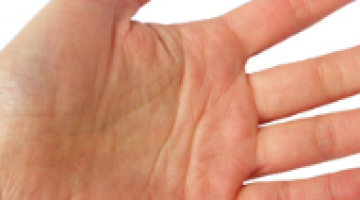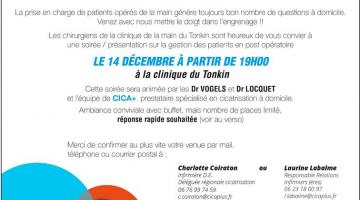responsive
What is a Mallet Finger ?
 After a small shock or an incorrect position of the finger, extending the tips of the fingers completely becomes difficult. The little finger remains bent and immobile.
After a small shock or an incorrect position of the finger, extending the tips of the fingers completely becomes difficult. The little finger remains bent and immobile.
This symptom is enough to diagnose MALLET FINGER
This accident often occurs during sports, such as ball or combat sports, or while doing professional activities. Often, it happens while making a bed, when the finger is used to slide the sheet under the mattress.
Rupturing of the extensor tendon causes a loss of feeling in the little finger. An extreme bending of the tendon causes it to rupture during a swinging movement in the finger, for example, the shock of catching a ball or if the finger gets trapped under a mattress.
The syndrome is not painful, and diagnosis is based on the deformation, or bent position of the finger.
Side and frontal x-rays are used to check if there is an avulsion fracture in the tendon.
Direct Access
Symptomes
responsive
Treatment

Treatment
The aim of the treatment is to keep the stretched tendon in place for a period of time, allowing the tendo to regain strength. The treatment can take two months to complete. Any movement might adversely affect the healing process. It is not necessary to stitch the tendon by surgery, but both ends of the tendon must be kept in contact during all of the recovery period. A simple splint will keep the tip of the finger extended.
The finger must be kept in this position throughout the strengthening period, i.e. two months. Even the slightest bending of the finger during this time might prevent ongoing healing and therapy will not be effective.
This therapy is very simple but restrictive - the splint must not be removed - even for washing, or if wearing the splint becomes bothersome.
- Very simple : as keeping the splint in place is enough.
- Very constraining: as you must never remove it even if it bothers you or you feel the need to wash your finger.
The position of the splint must be checked regularly, as even a slight shift in position could render the splint ineffective. After two months, the splint can be removed during the day, but it should still be worn at night. Our orthotics team will follow each case closely.
The finger recovers normally in most cases, If the treatment is followed accordingly. If flexion deformity is between 10 to 15 degrees,recovery occurs over time from 3 to 6 months.
Surgery
If the tendon has been pulled and detached a bony fragment at the base of the finger, surgery may be necessary.
The large bony fragement contains a joint surface, and will need to be reattached surgically





